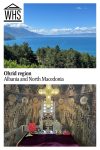Natural and Cultural Heritage of the Ohrid region
By Paul Cosgrave
What is the Natural and Cultural Heritage of the Ohrid Region?
The Natural and Cultural Heritage of the Ohrid Region is a transnational UNESCO World Heritage site that spans parts of North Macedonia and Albania. The region surrounds Lake Ohrid and has significant cultural landmarks. Lake Ohrid is truly a gem of the Balkans, offering a blend of natural beauty and rich cultural heritage. It is one of Europe’s oldest and deepest lakes, estimated to be around 1.3 million years old and reaching depths of up to 288 meters (945 feet). The lake is home to over 200 endemic species and is a critical habitat for migratory birds. As such, it is considered the most biologically diverse lake on earth.
Disclosure: This article contains affiliate links. Making a purchase through an affiliate link will mean a small commission for this website. This will not affect your price. Privacy policy.
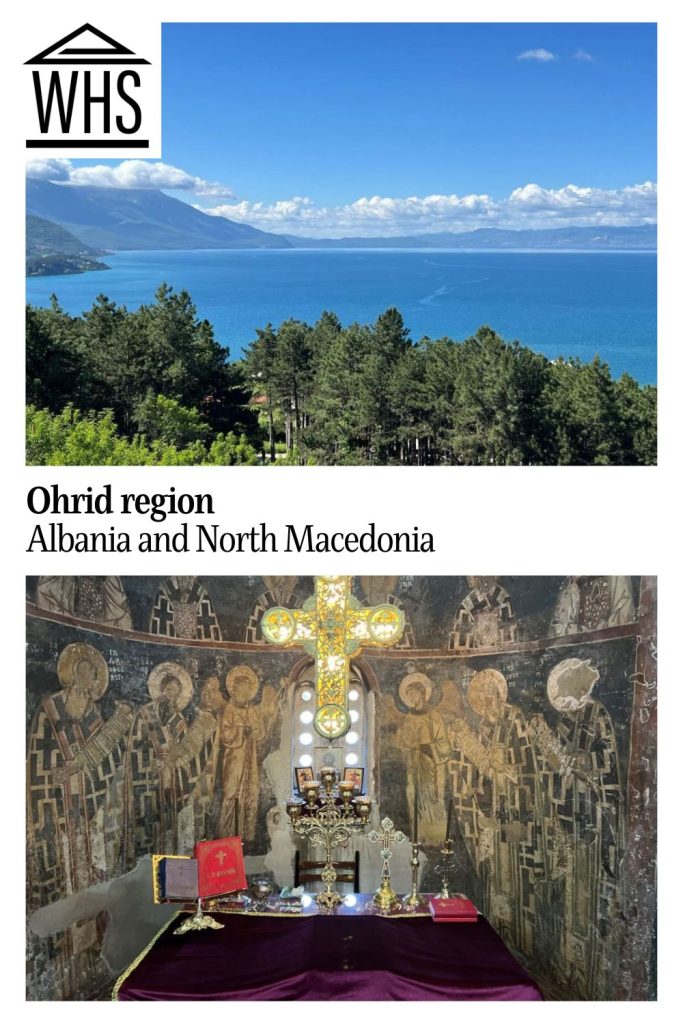
Ohrid is often called the “Jerusalem of the Balkans.” This is because it is famous for its numerous churches. Historically, it is said that Ohrid had 365 churches, one for each day of the year. While not all these churches have survived, there are still over 50 that you can visit.
Why is the Ohrid Region a UNESCO World Heritage site?
UNESCO selects World Heritage sites for their natural or cultural value. The Ohrid region is one of only a few sites on UNESCO’s World Heritage List that is both cultural and natural. Its designation as a natural site relates to Lake Ohrid being one of Europe’s deepest and oldest lakes, with a unique aquatic ecosystem of worldwide importance and many endemic species.
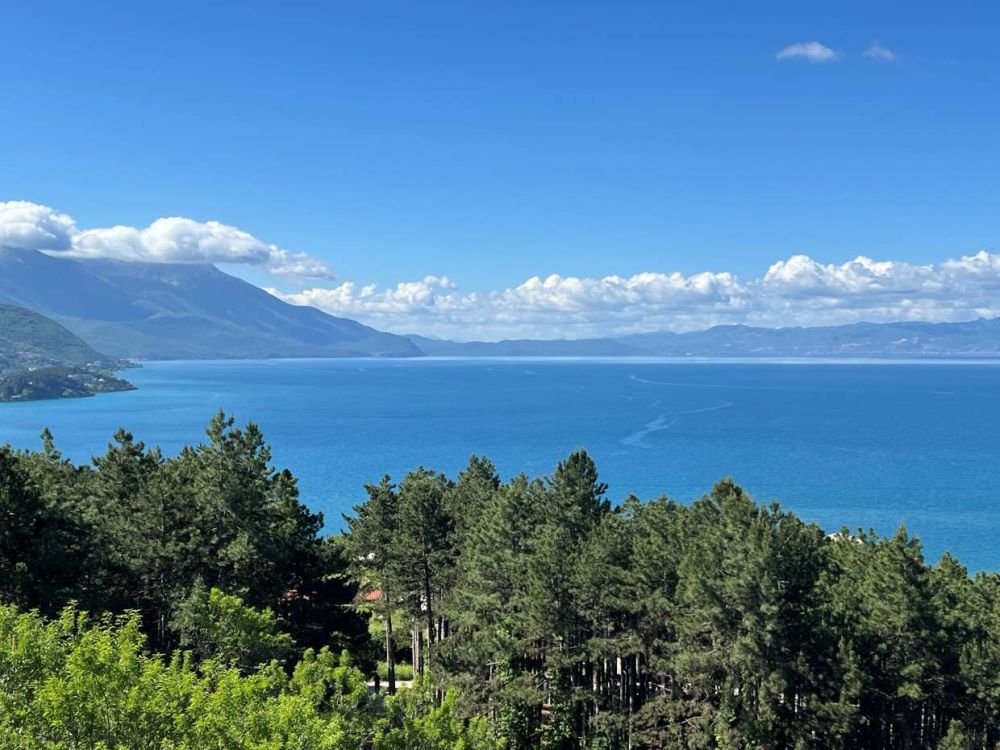
The Ohrid region’s designation as a cultural site is due to the region being one of the oldest human settlements in Europe, and the fact that it boasts exquisite medieval religious architecture, which is also “a testimony of Byzantine arts” in terms of the high quality of frescoes and mosaics in some of the churches, according to UNESCO. Most importantly, it was the location of the oldest Slavonic monastery and the first Slavonic university in the Balkans. The architecture in Ohrid town spans centuries, including early 4th-6th-century and medieval religious buildings, as well as urban vernacular architecture of the 18th and 19th century.
What can you expect on a visit to the Ohrid region?
When visiting the Ohrid region, you can see many historic and cultural sites. The following are descriptions of our favorites:
Lake Ohrid
During our visit in 2024, we didn’t get to spend any time on Lake Ohrid as the weather precluded it. Nevertheless, we circumnavigated the lake by observing many famous ecological, cultural, and religious sites. Starting on the north side of the lake, after we entered North Macedonia, we first visited the city of Struga. Here, we observed the massive flow of water out of the lake. The lake feeds a river that runs to the Adriatic Sea.
On the North Macedonia side of the lake, we stayed in the city of Ohrid, right on the lake. The weather was so bad that waves from the lake practically crashed into the hotel and the restaurant at Kaneo, where we ate that night. At the Kaneo restaurant, we had a great dinner of unique trout that is only found in the lake.
The Church of St. John at Kaneo
Before our dinner at the Kaneo Restaurant, we visited a Macedonian Orthodox church in Kaneo. The St. John at Kaneo Church is famous because it honors St. John the Theologian, believed to have written Revelations in the Bible. The Orthodox church is situated on a small cliff overlooking Kaneo Beach, at a point on Lake Ohrid. The frescos inside the church are magnificent. A small contribution is requested for entrance.
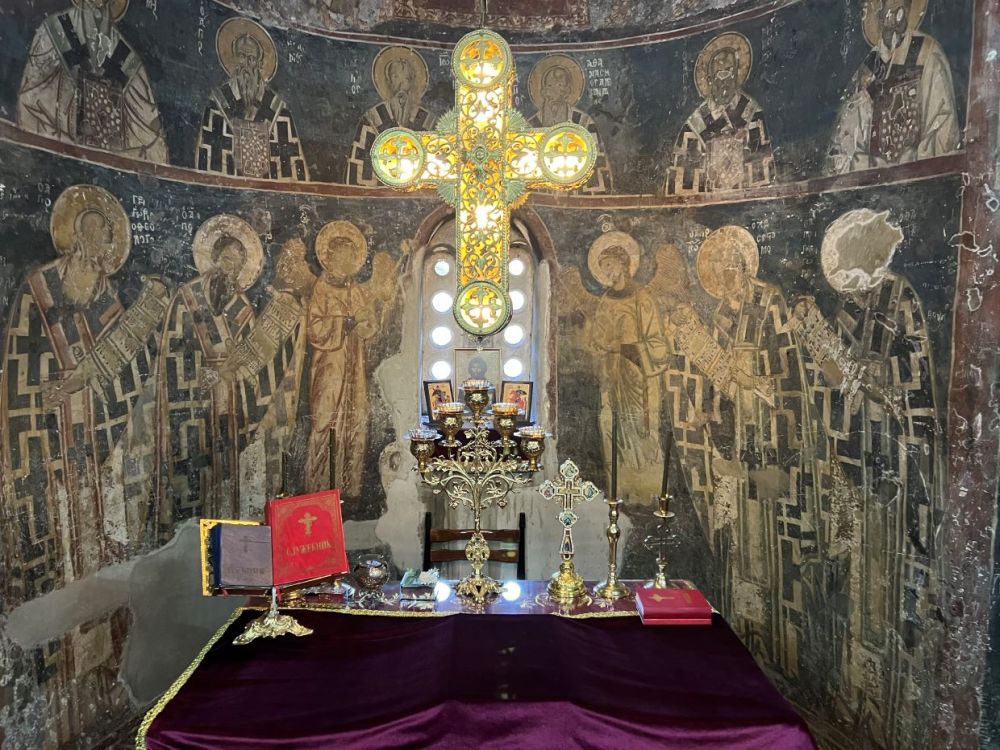
Ohrid Castle
While in Ohrid, we visited the famous Ohrid Castle. The view from the castle was spectacular. Also known as Tsar Samuel’s Fortress, it sits on a cliff high above the city. There has been a fortress in this location since the 2nd century BC. Throughout history, the fortress has been destroyed, rebuilt, and upgraded to bear marks from almost all the historical epochs when the Romans, Byzantines, Slavs, and Ottoman Turks ruled Ohrid. However, it is believed that most of the walls of the Citadel and suburban area, along with the preserved towers, date from the time of the emperor Samuel, from 976 to 1014.
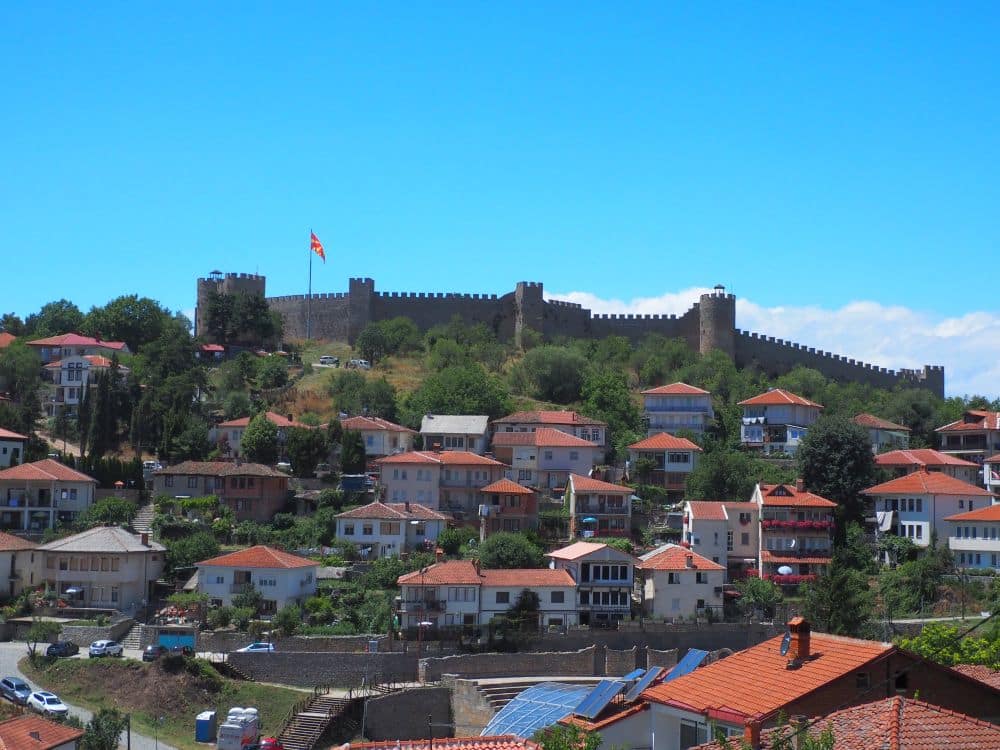
During the Roman era, the Romans built one of their famous theaters, which is still used today. It is located just under the Ohrid Castle.
Ohrid’s central city
In the central city of Ohrid, a well-populated market street leads to a park on the lake. We observed high school students enjoying a field trip to the market and the park. The park is laden with statues of famous people. One of the most famous is St. Clement, who founded the first Slavonic University in the Balkans, which is one of the prime reasons for Ohrid’s UNESCO status.
Bay of the Bones
We left the city of Ohrid and drove south around the lake back into Albania. Before we reached the Albanian border, we passed several famous sites, including the Bay of the Bones and the Monastery of St. Naum. The Bay of the Bones is an important archeological site that demonstrates the age of people living in the Ohrid Region. It is an authentic reconstruction of a part of the pile-dwelling settlement, dating back between 1200 and 700 BC. We didn’t have time to visit the buildings, but there were busloads of tourists exploring the buildings on the lake. Many were there because of the historic significance, just for a day trip from other parts of North Macedonia and Albania.
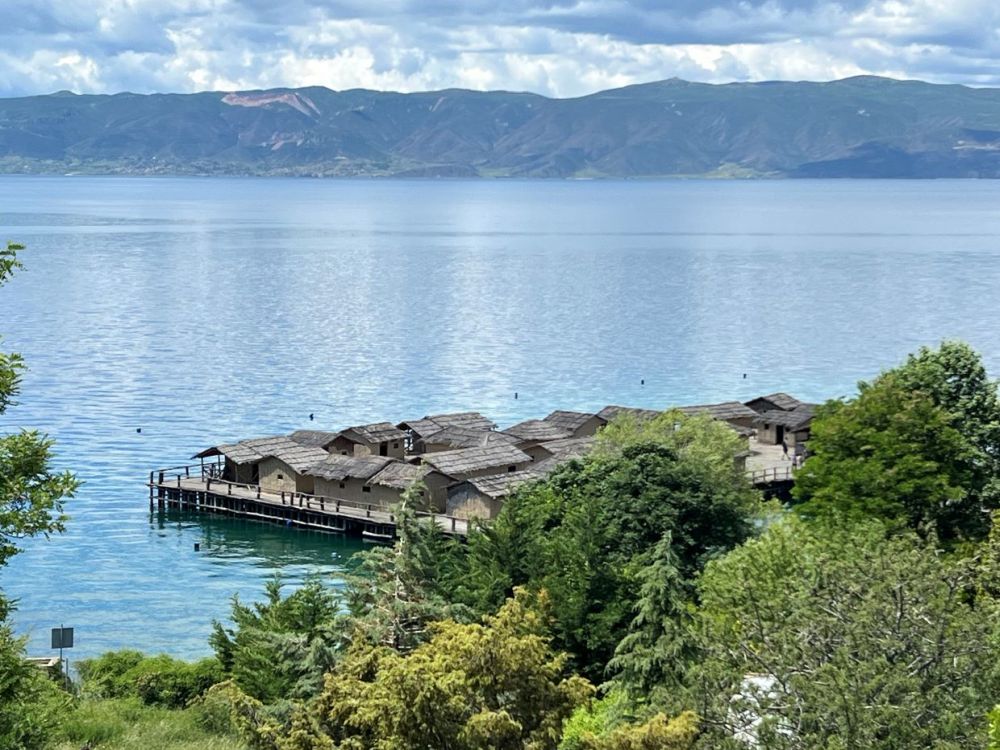
Monastery of St. Naum
The Monastery of St. Naum is an Eastern Orthodox monastery located 29 kilometers south of Ohrid, close to the Albanian border. It is built on a high rocky cliff over the shore of the most southern point of Lake Ohrid. It represents one of the first monuments of Slavic church architecture and art in the Ohrid region. The church’s frescos are world classics.
Driloni National Park in Albania
While most of the cultural places to visit are in North Macedonia, visiting the Driloni National Park in Albania south of the lake will give a perspective of how the springs here feed the lake. This results in a constant water flow entering and exiting the lake, contributing to the lake’s unique aquatic ecosystem.
Use the map below to find accommodations in the city of Ohrid or somewhere else on the lake:
Is the Ohrid Region worth visiting?
Ohrid is worth visiting. You can spend a few days here with all these wonderful cultural and historic places. We only spent one night on the North Macedonia side of the lake, but we easily could have stayed another day or two, especially if the weather had been better. The boat rides on the lake are economical and a great way to learn about the region. We are not scuba divers, but we know some people who come here to dive into the deep lake and explore the endemic species.
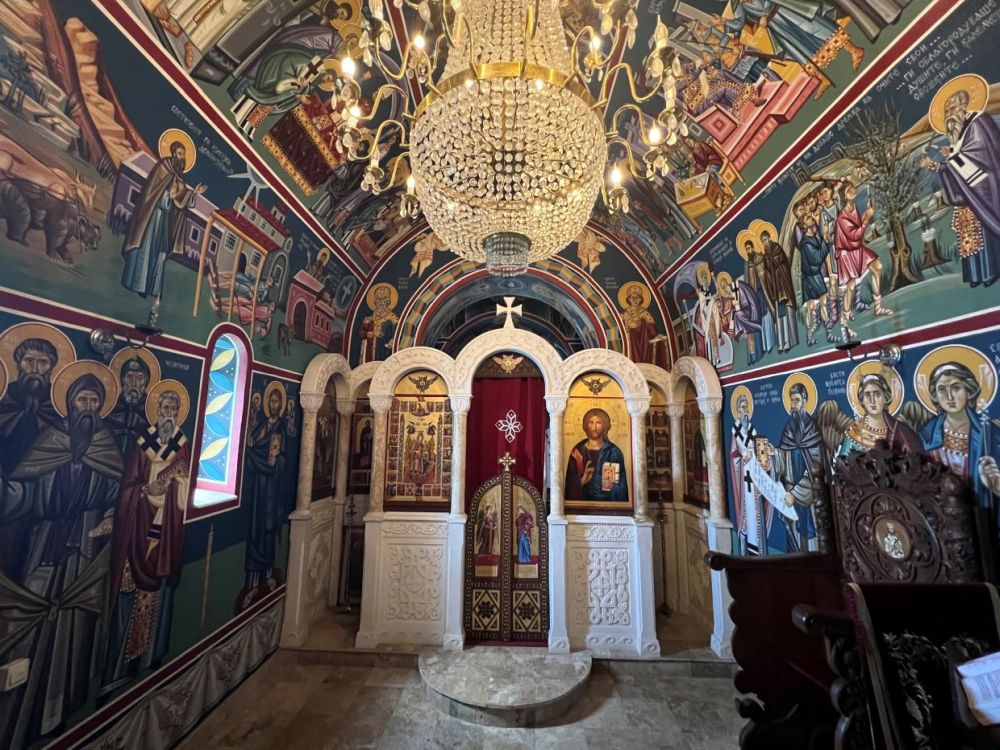
What sorts of travelers would like to go to the Ohrid Region?
I don’t think this is a fun trip for young families. However, we saw groups of high school students visiting and having fun. Some climbing is involved in visiting Samuel’s Fortress and some of the monasteries and churches we visited, so it may not be the best choice for people with a walking limitation. Aside from those exceptions, anyone wanting to learn more about culture, history, and ecology will love this place.
Tips for visiting the Natural and Cultural Heritage of the Ohrid Region
The summer season is warm and sunny. Bring sunscreen. Even if you visit in the summer, temperatures can get cool at night, so bringing a jacket or sweater can be a good idea.
If you plan on going to the beaches, bring water shoes, as the beaches are pebbly.
July and August are the prime seasons with warm and sunny weather and are the most crowded. The spring (May-June) and fall (September-October) shoulder seasons are lovely times to visit, but temperatures will be slightly lower. Winter season is not popular, but the cultural sites are still accessible.
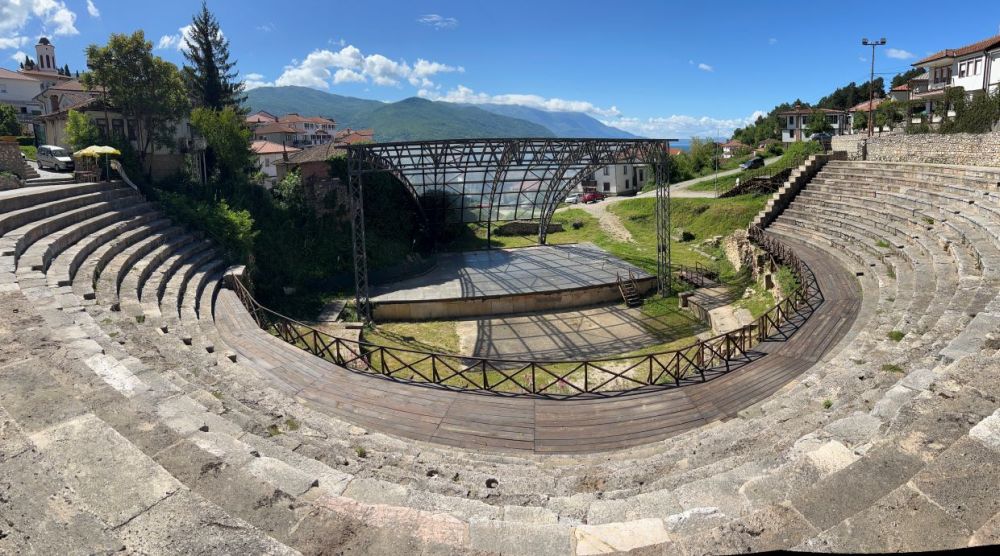
There are plenty of active ways to enjoy the Ohrid region: take a boat ride on the lake or go paragliding over it, try stand-up paddleboarding or kayaking, or take a hike.
If you’ll be traveling more around Albania, consider other UNESCO sites like Berat and Gjirokastra or Butrint.
Where is the Ohrid Region?
Ohrid is located on the Albanian-North Macedonia border, about equally distant from Tirana and Bitola. It is a bit further if you are coming from Skopje, the capital of North Macedonia.
You have several options to get to Lake Ohrid. You can fly into the Ohrid St. Paul the Apostle Airport, 10 km from Ohrid’s city center. There are direct flights from a few European cities, but they are primarily in the summer season.
There are bus services year-round from both Skopje and Bitola. The journey from Skopje takes about 3-4 hours, whereas Bitola is approximately 68 km (42 miles) away. There is also a year-round bus service from Tirana in Albania.
The closest train service is to Bitola, from which you must take a bus to Ohrid.
In Ohrid, there are transportation services on the lake, as well as buses and taxi services. The water shuttle services on the lake are particularly helpful to reach the Monastery of St. Naum on the southern part of the lake.
You can also rent a car and drive around the region, probably the best way to get around to all the scattered sights.
For more information about the Ohrid region, its opening hours and admission fees, see its official website.
Have you been to the Ohrid region? If so, do you have any additional information or advice about this UNESCO World Heritage site? Please add your comments below!

